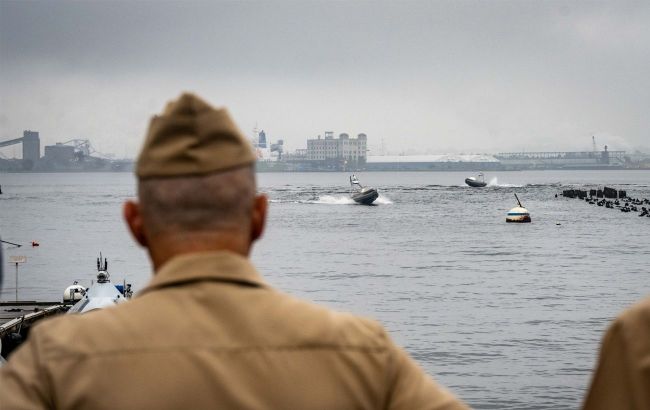US faces roadblocks to build drone fleet for future war with China – Reuters
 Photo: The US will invest billions in a fleet of drones for war with China (facebook.com USNavy)
Photo: The US will invest billions in a fleet of drones for war with China (facebook.com USNavy)
The US wants to contain China with a fleet of autonomous marine drones. But the program has been plagued by accidents, malfunctions, and leadership crises, according to Reuters.
Tests with failures
In July, the US Navy conducted tests of autonomous drone boats off the coast of California. During the demonstration, one of them suddenly stalled, and another crashed into a stationary ship, flew over its deck, and fell into the water.
This incident involving ships from Saronic and BlackSea Technologies was just one of a series of failures in the American program. Earlier, during other tests, an escort boat capsized, and the captain ended up in the water but miraculously escaped injury.
The incidents are attributed to software errors and communication failures between systems. Representatives of the Pentagon and the companies declined to comment on the events.
Chinese factor and Ukraine's experience
The Pentagon considers maritime drones to be a key tool for deterring China in the event of an invasion of Taiwan. Similar technologies have already proven effective in Ukraine, where kamikaze drones are striking Russia's Black Sea fleet.
Ukrainian naval drones cost about $250,000 and are mainly operated by operators. The US, on the other hand, is seeking to create fully autonomous systems costing several million dollars per boat.
Experts note that the American program is more ambitious and expensive, but is currently facing technical difficulties.
Money and contracts
In 2023, the Pentagon launched the $1 billion Replicator program. It involves the purchase of thousands of air and sea drones.
The US Navy has already allocated at least $160 million to BlackSea and supports the startup Saronic, which is valued at $4 billion. However, a $20 million contract with L3Harris was terminated after test failures.
The Pentagon says it is continuing to develop the project in a competitive environment with the involvement of private developers.
Crisis in fleet leadership
The US Navy is experiencing a personnel crisis in the division responsible for purchasing maritime drones. Rear Admiral Kevin Smith was recently removed from his post following an inspection by the Navy Inspector General.
Criticism of the program's effectiveness has also been heard at Pentagon meetings. Some projects have been deemed redundant, and some developments too expensive.
Experts warn that the transition from traditional shipbuilding to autonomous systems requires a break with established approaches and quick decisions. But so far, the US Navy is only at the beginning of this path.
In his budget request for 2026, US President Donald Trump proposes to strengthen missile and drone programs at the expense of aircraft and the Navy.
In March, Colonel Vadym Sukharevskyi, then commander of the Ukrainian Armed Forces' Unmanned Systems Forces, said that NATO countries' armed forces are not ready for modern warfare involving the use of drones.

